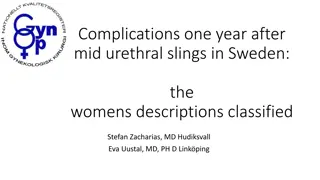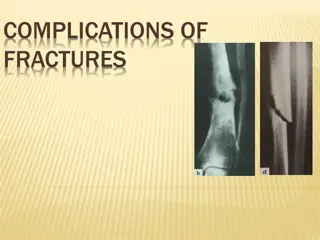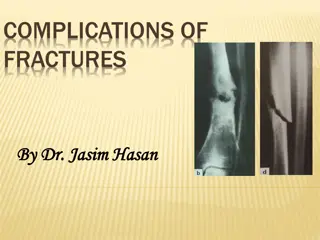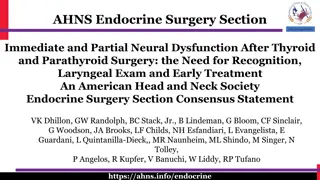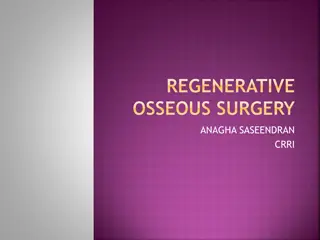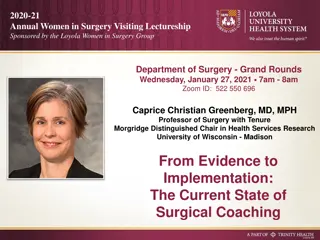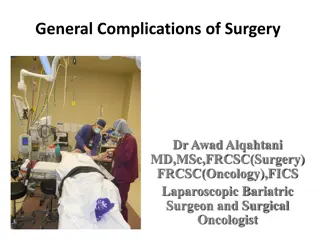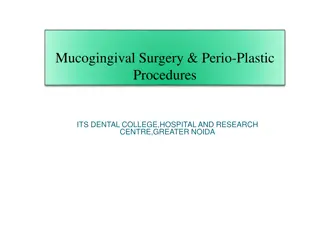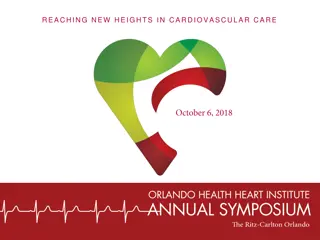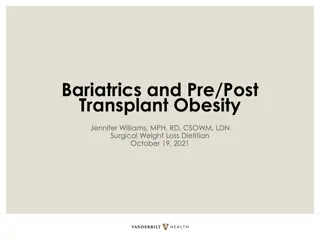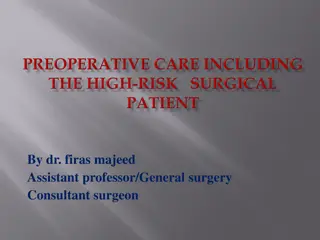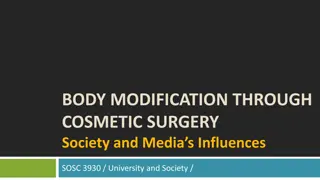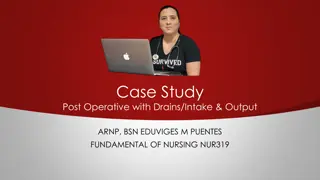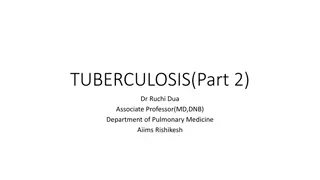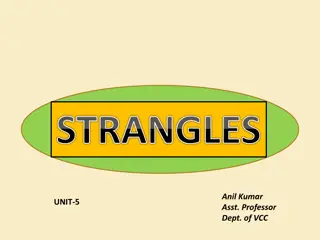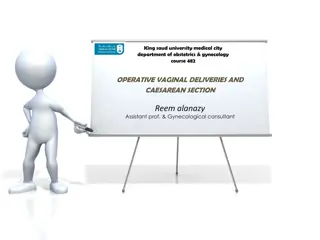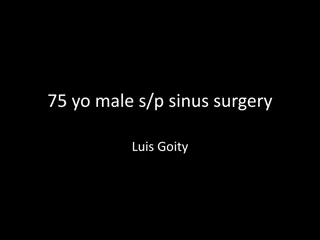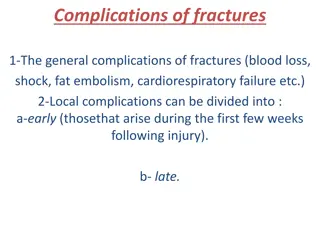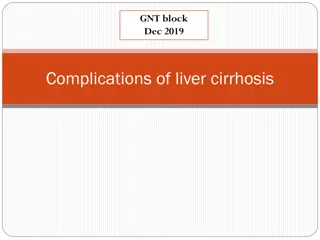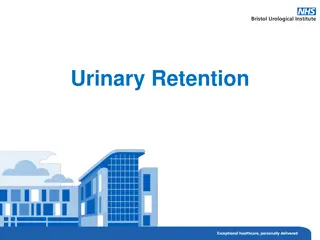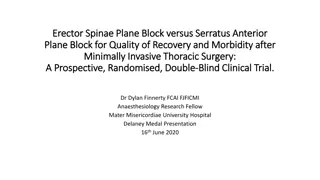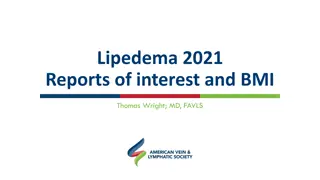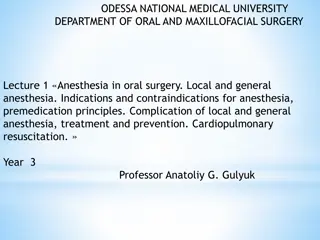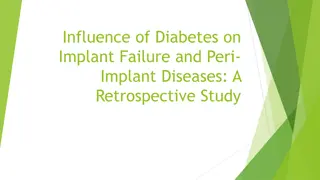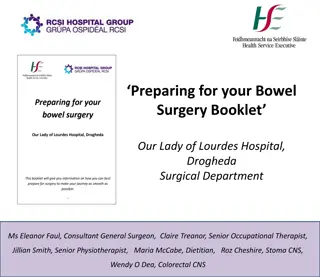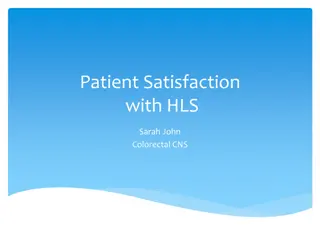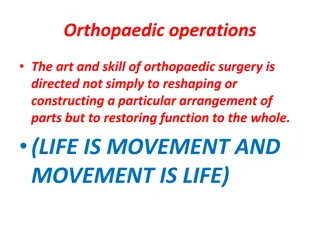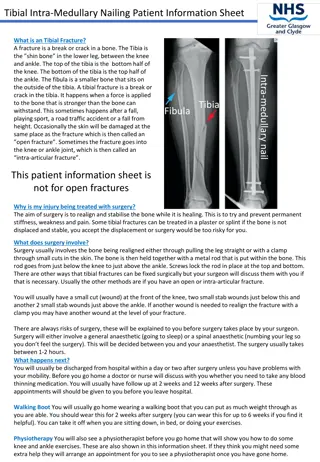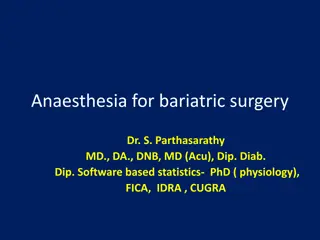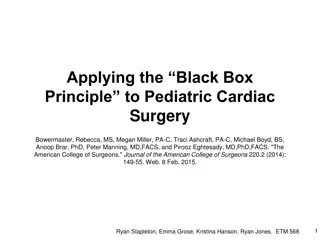Complex Case Study: CABG Surgery with Complications and Challenges
A 35-year-old male autodriver presented with dyspnea, chest pain, and a history of alcohol addiction. Past procedures included PTCA with stent in the LAD. Diagnostic tests revealed severe cardiac issues leading to CABG surgery with a twist involving pericardial adhesiolysis and cardiopulmonary bypass. The challenging post-operative period included high bleeding requiring multiple transfusions and complications such as low cardiac output and hepatorenal dysfunction. Unexpected complications arose, including TRALI and respiratory issues, necessitating drain reinsertion. This case highlights the complexity of managing cardiac patients with significant comorbidities and postsurgical challenges.
Download Presentation

Please find below an Image/Link to download the presentation.
The content on the website is provided AS IS for your information and personal use only. It may not be sold, licensed, or shared on other websites without obtaining consent from the author. Download presentation by click this link. If you encounter any issues during the download, it is possible that the publisher has removed the file from their server.
E N D
Presentation Transcript
ROUTINE CABG WITH A TWIST DR ASHISH DOLAS
CASE SCENARIO 35 Year old male patient an autodriver. Dyspneoa on exertion : NYHA CLASS III Since 2months. Chest pain radiating to back since 3 hours. H/o sweating. H/o Alcohol addiction.
Past H/o PTCA (stent) to LAD 3 months back. ECG : T wave inversion lead 2,3, aVf , V5 and V6. ST elevation in V1 to V3.
2D ECHO Mid and Distal anteroseptal akinesia. Severely compromised LVEF =30%. Inferior and Septal hypokinesia.
CORONARY ANGIOGRAM 100 % occlusion of proximal LAD within the stent, with impression of in stent restenosis. HRCT : Mild pericardial effusion Few enlarged mediastinal lymph nodes.
PLAN: SURGERY CABG Single graft ON INDUCTION: BP : 102/60 mmhg PA catheter at RA 20cm was exceptionally high at 34 (CVP).
INTRAOPERATIVE: Pericardial adhesions with SEVERE CONSTRICTIVE PERICARDITIS. Performed pericardial adhesiolysis (pericardiectomy). Patient was put on Cardiopulmonary bypass due to severe haemodynamic instability. Single graft was done to LAD.
CHALLENGING POST OPERATIVE PERIOD CHALLENGE I: Due to pericardiectomy bleeding was expected. In the first 48 hours patient bleed around 2.5 liters. Total of 9 PCVs , 2 SDPs, 6 RDPs and 6 FFPs were transfused in first 48 hours.
CHALLENGE II : Low Cardiac Output. Low Ejection Fraction due to sudden release of compression.
As EXPECTED COMLICATIONS (CHALLENGE III) FROM TRANSFUSION IN THE FORM OF : HEPATORENAL DYSFUNCTION : High bilirubin went upto 6. High RFTS with creatinine GOING UPTO 2.8. TRALI (TRANSFUSION RELATED LUNG INJURY ) WAS ALSO EXPECTED . Pericardial and pleural drains were removed on day 4 but reinserted on day 6 due to respiratory complications and low cardiac output.
COMPLICATIONS WERE MANAGED BY : High inotropic support for longer duration of time (Due to low Cardiac Output). Giving higher antibiotics ( to avoid post operative septicemia and SIRS) Keeping close eye on fluid balance. Good post operative rehabilitation.
POST OP 2D ECHO EF= 30% NO additional RWMA. No MR NO TR.
Intercostal drains were removed on day 14 and patient discharged on post op day 16. Now came for 2ndfollow up in 3weeks and doing well ready to drive autorickshaw again.
DISSCUSSION Complications : OVERALL MORTALITY DUE TO PLANNED PROCEDURE ITSELF IS 14 TO 20 %. Bleeding 10% Arrythmias : Atrial and ventricular 8 % Prolonged intubation ( > 48 hrs) 4 % Prolonged chest tube output (> 6 Days) 4%
Renal and hepatic insufficiency Wound infection 6 % Systemic infection 4 % Low cardiac output 4% Cerebrovascular accident. 2 %.
Morbidity remains high for pericardiectomy. In addition to age, gender, and comorbidities, attention should be given to Etiology during surgical planning or referral. This significantly influences the requirement for cardiopulmonary bypass, chances of bleeding complications, and transfusion requirements.
Reduced LVEF and right ventricular dilatation were independent predictors for early mortality. CAD, chronic obstructive pulmonary disease and renal insufficiency were risk factors for late mortality. Thus, an optimal timing for surgery on CP remains crucial to avoid secondary morbidity with an even worse natural prognosis.
CONCLUSSION: Our patient presented with surprise , as a case of constrictive pericarditis with low cardiac output with low LVEF. It was challenging to manage patient postoperatively as a surprise on table was tackled. It is always a team work with all the specialties coming together to bring out these type of challenging patients.



